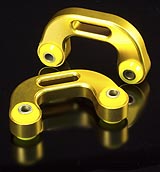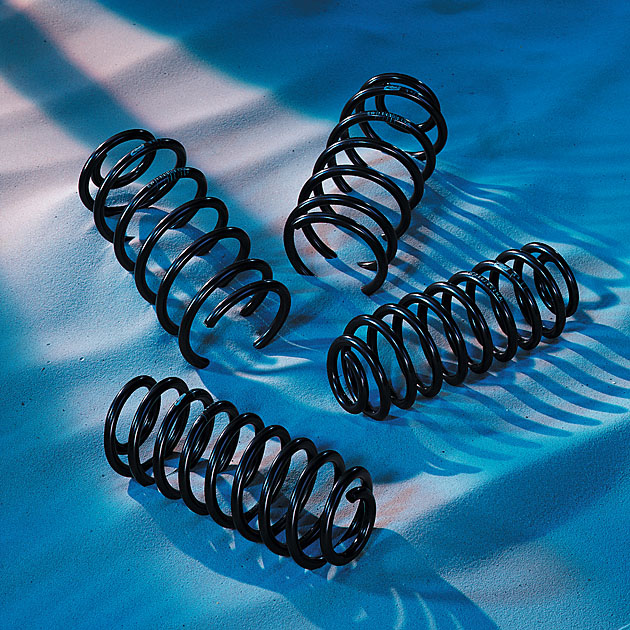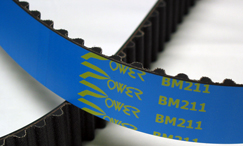
|
 |
|||
|
|
ARE YOU 'BORN TO BE WILD' Impreza Will performance upgrades void my Subaru warranty?Warranties are peculiar things with grey areas so be prepared to have a fight on your hands with your main dealer. Having said that there is such a thing as the Magnuson-Moss Warranty Act. This is the US federal statute that governs warranties on consumer products and although this is an American law you could use the information contained in it to argue your case in this country. Basically, it states that your warranty cannot be deemed void because of an aftermarket part (this would include performance upgrades) unless the aftermarket part caused the problem that the warranty claim is about. For example, if you fit an aftermarket back box to the exhaust and your shock absorber failed then the manufacturer should not deny your warranty claim because a back box should not affect the suspension. However if you fitted an aftermarket high flow performance exhaust and a remapped ECU and your turbo failed the manufacturer could claim that the extra stresses caused by the remap and high flow of air had caused the failure. The grey areas come in the form of possible links such as if you fitted the above exhaust and ECU and then you had shock absorber failure the manufacturer may try to claim that the additional performance of the car put additional stresses on the suspension. The law looks at what is reasonable to expect and while the law may be on your side, the dealer service department may or may not be.What subaru performance tuning can I do to my Subaru Outback, Non turbo Forester/Legacy/Impreza?The answer I am afraid is that there is very little that you can do to a non turbo car to make it go much better than standard. Naturally aspirated (N/A) engines draw in air for combustion under atmospheric pressure. As the piston moves down, the intake valve opens allowing the piston to suck air into the combustion chamber. How well the chamber is filled is called its volumetric efficiency.A volumetric efficiency of 100% means that the combustion chamber is completely filled with air compared to the combustion chamber at static conditions. The volumetric efficiency of a naturally aspirated engine can never be higher than 100% as the combustion chamber cannot be more full than it is under static conditions due to the air pressure being the same inside the combustion chamber as it is outside. Its ability to fill the chamber is also greatly affected by how large the intake valve is, how long the intake valve is open for and how fast the engine is rotating. The faster the engine is rotating the faster the air is being sucked through the inlet valve aperture. Air can only pass through the aperture up to a certain speed (try blowing through a straw - the straw limits how quickly you can empty your lungs in the same way that a valve aperture restricts the flow of air into the combustion chamber). To improve the performance of a Normally asperated engine, its volumetric efficiency needs to be increased as this is what allows more air to be ingested by the engine to create more power. Increasing the maximum RPM will also increase its performance. To increase its volumetric efficiency requires changes to cam shafts (to allow the valves to open for longer), inlet tracts to allow the air to pass more freely, exhaust systems etc. Even so the increase in power will only be marginal as most engines are fairly efficient from factory. In terms of ease and performance compared to cost, a forced induction engine is best. The performance of a turbocharged engine can be increased greatly just by increasing the boost or controlling where maximum boost is reached. Simple modifications such as larger exhaust systems and free flowing air filters can yield large power increases compared to doing the same modification to a N/A engine. You could convert it to a tubo car by changing the exhaust, engine, wiring loom, ECU and adding a turbo but the time and expense of doing this would be prohibitively expensive and you would do better by buying a turbo version of the car. What subaru performance tuning can I do to my Subaru Legacy T ?There is only so far you can go with these early Legacys before you blow the engine. How much power did you want to go to? The early turbo Legacy UK was 200 bhp and the early Impreza UK was 210 bhp and you can probably achieved this by changing the exhaust and putting in a high flow air filter. Also the Legacy was a heavy car so may seem slow by comparison.A decat or high flow cat (to keep it street legal and MOT passable) exhaust system and replacement hi-flow panel filter are the first steps to more power. Next you would be looking at replacing the engine management system with an aftermarket ECU and having it remapped to the car. After this and you need to be considering replacing the fuel injectors and turbo, (and probably the inlet manifold to enable a front feed turbo to fit), the fuel pump and possibly fuel regulator and having the map tweaked. Next you would be looking at rebuilding the engine (and probably gearbox) because it was not strong enough to take the pounding. The questions are, how far do you want to go and how deep are your pockets? Top of page *Beware the new MOT requirements that the noise of an exhaust must not be unreasonably louder than a standard exhaust in average condition. Also new legislation regarding fitting catalytic converters to cars registered after 1st March 2001. Cats fitted to these vehicles must be "type approved for the vehicle" for road use, therefore all aftermarket non "type approved" cats fitted to vehicles registered after this date must be considered for off road use only. |
|

|
We hope you find our website informative, interesting and easy to navigate to find what you are looking for. It will continue to be developed and expanded whilst remembering that it is a site 4you. Subaru4You is based in Newbury in Berkshire and provides servicing and performance upgrades, Subaru engine rebuilding and gearbox rebuild for the Subaru across the whole of the south of England. Subaru4you are a company that is dedicated to providing a quality service for the Subaru with highly experienced Subaru Specialist technicians. Subaru4you have friendly approachable staff focused on Subaru vehicles. We are committed to providing you with the highest quality Subaru tuning and service with low hourly rates giving excellent value for money. We can provide for all of your needs from a simple Subaru 'A' service to a full Subaru Impreza WRX STi Service and cambelt change. Check our Subaru4you service page for more information on Subaru Servicing for Subaru Forester and Legacy. |























